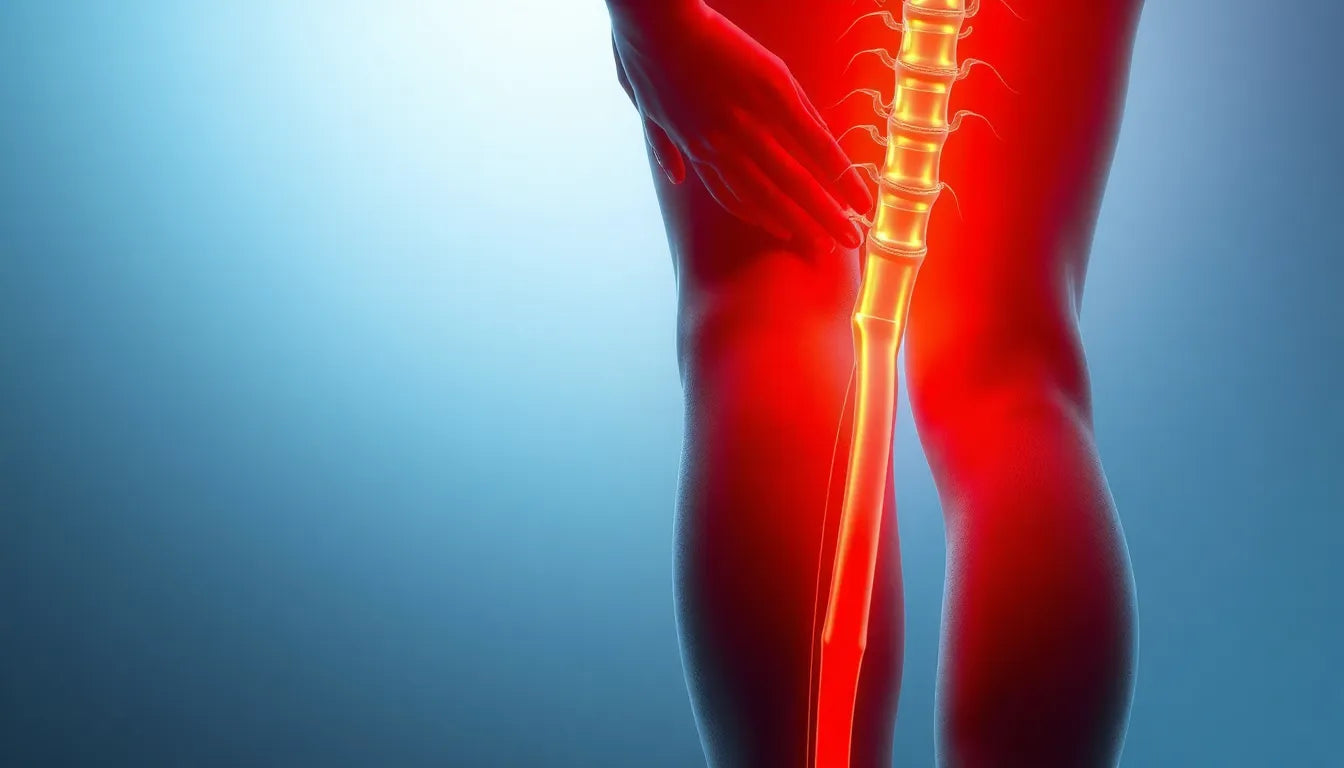Have you ever experienced a sudden, sharp pain in your back that seems to radiate down your leg or arm? If so, you might be familiar with the discomfort of a herniated disc. This condition is more common than you might think and can significantly impact daily life, causing pain, numbness, and even weakness. Understanding the nature of a herniated disc and its symptoms is crucial for those affected, as it often dictates the approach to treatment and management.
A herniated disc occurs when the soft, gel-like center of a spinal disc pushes through a crack in its tougher exterior casing. This can irritate nearby nerves, leading to the symptoms many people experience. Common signs include localized pain, tingling, and muscle weakness, which can vary depending on the disc's location in the spine. These symptoms can interfere with everyday activities, making it essential to seek an accurate diagnosis for effective treatment.
The importance of accurate herniated disc diagnosis
When it comes to managing a herniated disc, accurate diagnosis is paramount. Misdiagnosis or delayed diagnosis can lead to prolonged discomfort and potentially more severe complications. Understanding the specific nature and location of the herniation allows healthcare professionals to tailor treatment plans that can alleviate symptoms and improve quality of life.
This blog aims to provide a detailed exploration of the diagnostic methods used for herniated discs. By delving into the various techniques and approaches, we hope to equip you with a comprehensive understanding of the diagnostic process. Empowering yourself with knowledge can be a vital step in managing your condition effectively and engaging in informed discussions with your healthcare provider.
In the following sections, we will explore the symptoms associated with herniated discs and the various diagnostic methods available, from medical history assessments to advanced imaging techniques. Whether you're experiencing symptoms yourself or seeking to understand more about this common spinal condition, the insights provided here will serve as a valuable resource.
understanding herniated disc symptoms
Recognizing the symptoms of a herniated disc is essential for early diagnosis and effective treatment. While back pain is a common indicator, the specific symptoms can vary significantly depending on the location of the herniated disc along the spine. In the lumbar region, which is the lower part of the spine, symptoms often include pain that radiates from the lower back down to the buttocks and legs. This is commonly referred to as sciatica. Patients might also experience numbness, tingling, or weakness in the legs or feet.
Conversely, if the herniated disc is located in the cervical region, which pertains to the neck area, symptoms may manifest as pain that travels from the neck to the shoulders and arms. This can be accompanied by numbness or tingling in the arms or hands, and sometimes muscle weakness. Understanding these variations is crucial as they guide healthcare professionals in pinpointing the affected area of the spine, thus forming a basis for further diagnostic procedures.
diagnostic methods: a comprehensive overview
medical history and physical examination
The journey to diagnosing a herniated disc typically begins with a thorough medical history and physical examination. During this initial assessment, healthcare providers gather detailed information about the patient's symptoms, lifestyle, and any previous injuries or conditions that might contribute to their current state. A key component of the physical examination is the straight leg raise test, which helps identify nerve root irritation in the lumbar region. This test, along with other physical assessments, assists doctors in determining the likelihood of a herniated disc and deciding on the necessity of further testing.
advanced imaging techniques
MRI scans
MRI scans are widely considered the gold standard for diagnosing herniated discs due to their ability to produce detailed images of soft tissues, including spinal discs and nerves. This non-invasive imaging technique uses magnetic fields and radio waves to create comprehensive cross-sectional images of the spine, allowing doctors to precisely locate and assess the extent of the herniation. MRI scans not only confirm the presence of a herniated disc but also help in evaluating the severity of nerve compression, which is critical for planning appropriate treatment strategies.
CT scans and myelograms
For patients who cannot undergo an MRI, perhaps due to metal implants or severe claustrophobia, CT scans and myelograms serve as valuable alternatives. CT scans offer detailed images of the spine's bony structures and can be particularly useful in visualizing bone spurs or spinal stenosis. Myelograms, on the other hand, involve injecting a contrast dye into the spinal canal before performing a CT scan. This combination enhances the visibility of the spinal cord and nerve roots, aiding in the diagnosis of herniated discs, especially in complex cases.
electrophysiological tests
Electrophysiological tests, such as electromyography (EMG) and nerve conduction studies (NCS), play a crucial role in assessing nerve and muscle function. These tests are typically recommended when there is a need to evaluate the extent of nerve damage or to differentiate between a herniated disc and other neurological conditions. EMG measures the electrical activity of muscles, while NCS evaluates the speed and strength of signals traveling through the nerves. Together, they provide invaluable insights into the impact of a herniated disc on the nervous system and assist in refining the diagnosis.
comparative analysis of diagnostic tests
When considering diagnostic tests for herniated discs, it's important to weigh the pros and cons of each method. MRI scans, while highly accurate and non-invasive, can be costly and are not suitable for all patients. CT scans and myelograms, although effective, involve exposure to radiation and may require the use of contrast dye, which carries its own risks. Electrophysiological tests, while providing detailed information about nerve function, can be invasive and uncomfortable for some patients. Ultimately, the choice of diagnostic test depends on the patient's specific circumstances, including their medical history, symptoms, and overall health.
Interdisciplinary Approach to Herniated Disc Diagnosis and Treatment
The diagnosis and treatment of a herniated disc often require a collaborative approach involving various healthcare specialists. Neurologists, orthopedic surgeons, and physical therapists each play a crucial role in assessing and managing the condition. This interdisciplinary approach ensures a comprehensive evaluation and a tailored treatment plan that addresses the unique needs of each patient.
Conservative treatments are typically the first line of defense for a herniated disc. These may include physical therapy, pain management with medications, and lifestyle modifications such as ergonomic adjustments and exercise. However, if conservative treatments fail to alleviate symptoms, surgical options may be considered. Surgical interventions, such as discectomy or spinal fusion, are generally reserved for cases where there is significant nerve compression or when the patient's quality of life is severely impacted.
Enhancing the Diagnostic Experience
To improve the diagnostic experience for patients, incorporating visual aids can be highly beneficial. Diagrams of the spine and infographics detailing symptoms and diagnostic processes can help patients better understand their condition. Additionally, sharing personal stories or case studies of individuals who have undergone diagnosis and treatment for herniated discs can make the information more relatable and engaging.
These narrative elements not only provide reassurance but also offer insights into the recovery journey, helping patients set realistic expectations and feel more connected to their healthcare process. Ultimately, a well-informed patient is better equipped to participate actively in their treatment plan, leading to improved outcomes.
Conclusion
In conclusion, understanding the intricacies of herniated disc diagnosis is essential for effective management and treatment. From recognizing symptoms to choosing the appropriate diagnostic tests, each step plays a vital role in forming a comprehensive treatment plan. An interdisciplinary approach involving various specialists ensures that patients receive well-rounded care tailored to their specific needs. By leveraging visual aids and personal stories, healthcare providers can enhance the diagnostic experience and empower patients with the knowledge needed to navigate their condition confidently.
Frequently Asked Questions
What are the first signs of a herniated disc?
Early signs of a herniated disc often include localized pain, tingling, or numbness in the affected area. In the lumbar region, pain may radiate down the leg, known as sciatica, while in the cervical region, pain can extend to the shoulders and arms.
How long does it take to diagnose a herniated disc?
The timeline for diagnosing a herniated disc can vary. Initial consultations and physical examinations may take a few days, followed by imaging tests like MRI, which can take a week or more to schedule and interpret.
Can a herniated disc heal on its own?
In some cases, a herniated disc can heal naturally over time with rest, physical therapy, and lifestyle changes. However, severe cases may require medical intervention if symptoms persist or worsen.
What should I expect during an MRI scan for a herniated disc?
During an MRI scan, you will lie still on a table that slides into the MRI machine. The procedure is painless but can be noisy, so ear protection is often provided. The scan typically lasts 30 to 60 minutes.
Are there any risks associated with diagnostic tests for herniated discs?
Most diagnostic tests for herniated discs, such as MRI, are non-invasive and carry minimal risk. However, tests involving radiation, like CT scans, or those requiring contrast dye, like myelograms, have associated risks that should be discussed with your healthcare provider.


















